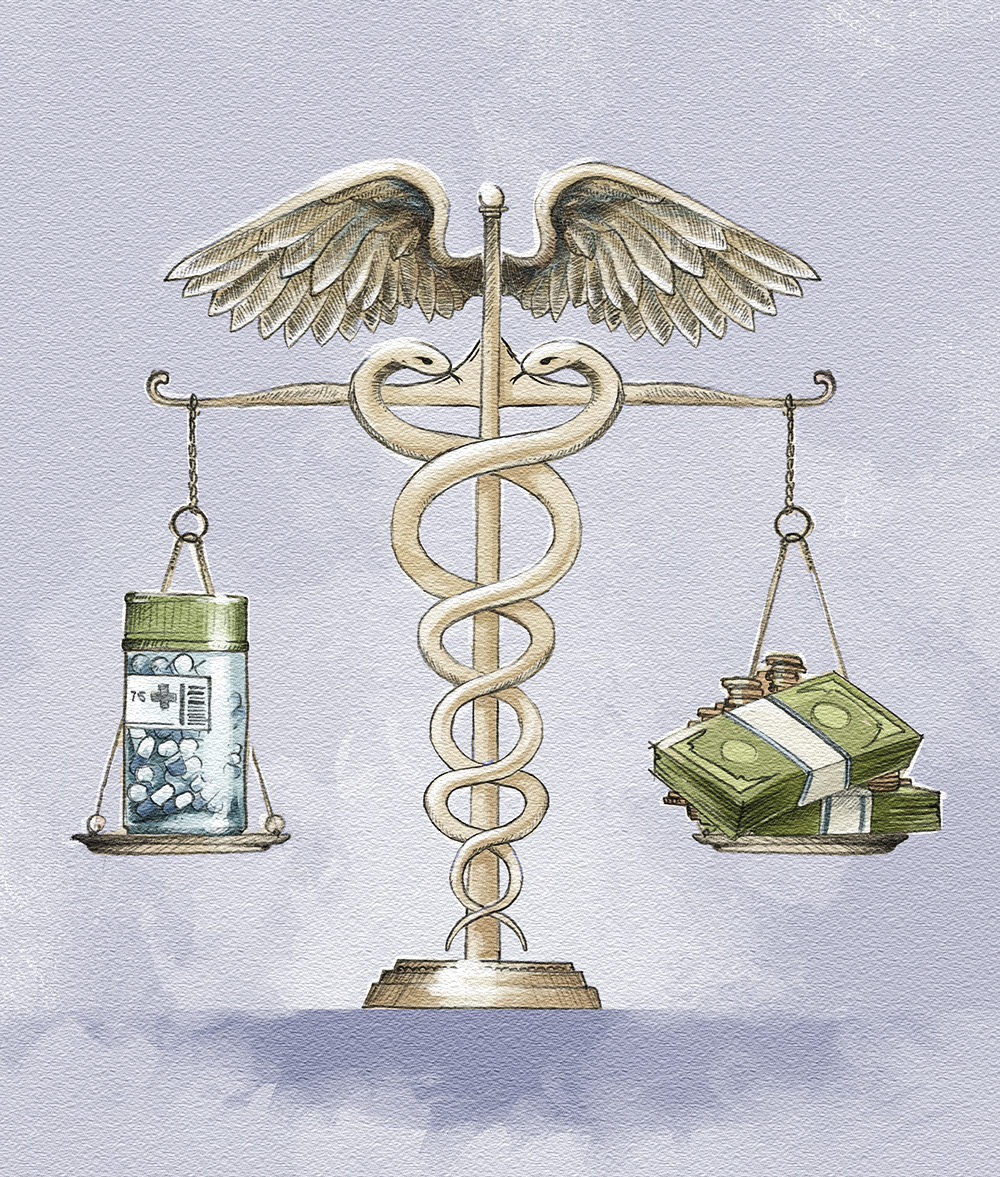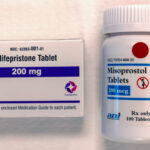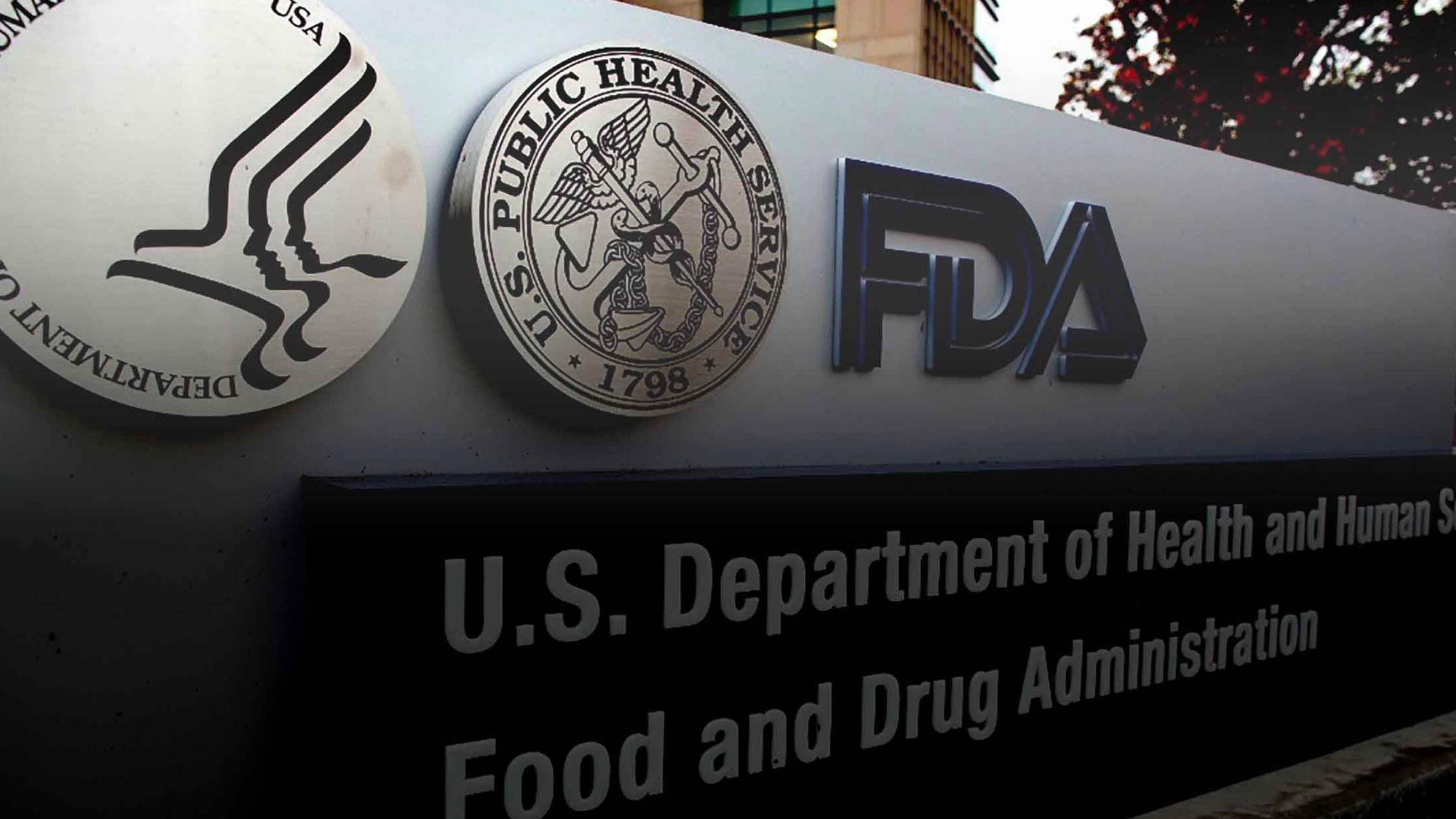FDA Documents Reveal Depths of Internal Rancor Over Drug’s Approval Process
In some ways, it reads less like the product of a dusty bureaucracy and more like a Game of Thrones novel. Compelled by a lawsuit, the Food and Drug Administration is releasing thousands of never-before-seen documents regarding the most controversial drug approval in many years. And these documents are beginning to reveal the inner workings of a government agency that’s being torn apart by conflicting loyalties.

BURDENS OF PROOF
In an ongoing series of investigations performed for Undark by the Science, Health, and Environmental Reporting Program at New York University, we examine some recent FDA drug approvals to highlight the messy interface between scientific reasoning, and political and commercial expedience.
Late last year, the FDA approved eteplirsen, a potentially lifesaving drug for young boys (and in rare cases, girls) doomed to die from Duchenne muscular dystrophy, an incurable degenerative disease. That the approval was controversial is an understatement: In approving the drug, the agency overruled its own scientific advisers, rejected the recommendations of its review panel, triggered a formal internal dispute process, and apparently sparked the resignation of one senior official and the retirement of another.
The approval also failed to quash doubts about whether the drug, in fact, works — and it raised questions about how well the agency fulfilled its legal and scientific obligations to ensure that the drugs Americans use are both safe and effective.
Evidence of deep disagreement within the FDA over the decision to approve eteplirsen began to surface almost immediately after the FDA issued its go-ahead last September. Central to the tension was the decision by Janet Woodcock, the director of the agency’s Center for Drug Evaluation and Research, to issue the approval despite the contrary opinions of experts empaneled by the agency to review the drug.
But the new documents being released by the FDA — a response to a Freedom of Information Act lawsuit filed by this reporter to get additional information about eteplirsen’s approval — are now shining added light on the level of internal discord that accompanied the drug’s review. Chief among the new revelations: charges by one high-ranking official that Woodcock, an FDA employee for three decades, skirted established norms, bypassed multiple layers of FDA expertise and authority, and even ignored calls for more thorough studies in greenlighting the controversial drug.
In an email dated September 14, 2016 and addressed to Robert Califf, then head of the FDA, John Jenkins, then the head of the Office of New Drugs and one of the officials who left in the wake of the eteplirsen approval, makes a number of blistering allegations regarding Woodcock’s decision to ignore the advice of the eteplirsen review team. Such review teams, typically comprised of dozens of physicians, pharmacologists, statisticians, and various other experts, weigh clinical evidence for a drug’s safety and effectiveness and decide whether or not the drug should be allowed on the U.S. market.
The team’s decisions can be contentious, and sometimes higher-ups have to settle disputes. However, for a center director to overrule a review team is “rather exceptional,” said Michael Carome, director of the health research group at the nonprofit group Public Citizen. “I’ve never seen circumstances like this, especially with such unanimity by the review team that prepared such a detailed analysis.”
In his email, Jenkins alleges that Woodcock short-circuited normal agency procedures, including the review team’s desire to require better-quality data in a new trial of eteplirsen. “[I]t was Janet that pressed that a new randomized trial not be required,” Jenkins wrote. “So, if Janet had followed the normal CDER process in this case the review team would have required placebo-controlled trials … and we would have better data on which to make a decision.”
Jenkins also insisted that Woodcock’s involvement in the eteplirsen decision — normally the domain of lower-ranking officials than the head of CDER — was abnormally intense, presumably putting pressure on the team to approve the drug. “I have worked with Janet for over 20 years and I can say without a doubt that her involvement in this case far exceeds her usual ‘hands on’ approach,” Jenkins wrote. “You note that there were 14 Center director briefings related to this case, that is clearly not the ‘norm’ for how CDER operates.”
Further, writes Jenkins, the manner in which Woodcock overruled the review team effectively sidestepped several waypoints in what is normally a regimented series of interactions between various FDA subdivisions and managers and a new drug applicant — processes rarely, if ever, abrogated by the director of the Center for Drug Evaluation and Research. “In this case, that process was bypassed,” Jenkins wrote.
Neither Woodcock nor Jenkins would agree to speak on the record to Undark about the newly released correspondence, but according to Carome, the whole exchange casts a shadow over the FDA.
“[Woodcock] has the authority, and the chain of command is hers, but the story of how this unfolded really was extraordinary,” he said. “Her actions eviscerated longstanding procedures within the agency” that ensure that FDA makes consistent decisions in the interest of public health.
Diana Zuckerman, the president of the nonprofit National Center for Health Research, expressed similar concerns. “I’ve seen high-level FDA officials undercut their scientists at meetings, or where they clearly try to take a side,” she said, “but I’ve never seen anything like this from a center director.”
Even more surprising than the alleged breaches of bureaucratic norms were Woodcock’s alleged breaches of scientific ones. The FDA is required by law to allow a drug to market only based upon scientific evidence that the drug is safe and effective; nothing other than science should be the basis of a decision. Jenkins’ memo backs up earlier allegations made by other FDA officials that Woodcock had decided to approve the drug not just before the review team had prepared its final report, but also well before a last round of crucial data were in.
“It’s not supposed to be the mission of the FDA to give treatments to desperate patients because the desperate patients want the treatments,” says Zuckerman, who worries that Woodcock is allowing patient desires to trump scientific evidence. “The role of the FDA is to ensure that the benefits outweigh the risks.”
Jenkins’ memo also supports claims that Woodcock’s decision to approve the drug was motivated, in part, by her worries about the financial solvency of Sarepta Therapeutics, the company trying to get eteplirsen approved. And the most serious allegation of all from Jenkins’ memo is that Woodcock failed to follow FDA’s set-in-stone procedures to log discussions with a drug company that has an application underway: “Janet has had frequent private conversations with the sponsor and the stakeholder community,” he wrote. “To my knowledge, she has not documented the substance of those conversations to the record, as is required under FDA regulations.”
Carome called this “a disturbing statement. “If she’s not following FDA’s required procedures,” he said, “the question is why not?”
Even with the understanding that Jenkins’ perceptions are clearly colored by his antipathy for Woodcock, the newly released documents would seem to illuminate a bureaucracy whose procedural and scientific rules were broken, one after the other, by an administrator determined to get a drug approved.
The reaction by Califf, the recipient of the emailed memo, was one word: “Ouch.”
Charles Seife is a professor of journalism at New York University, and the author of numerous book, including “Proofiness: The Dark Arts of Mathematical Deception.” His work has appeared in The New York Times, The Washington Post, Science, New Scientist, Scientific American, Wired, Slate, ProPublica, The Economist, and many other publications.











Comments are automatically closed one year after article publication. Archived comments are below.
Have2Comment’s claim that the vote was 7 to 6 is incorrect:
The following is copied directly from the FDA’s summary minutes of the AC meeting.
7. VOTE: Do the clinical results of the single historically-controlled study (Study 201/202)
provide substantial evidence (i.e., evidence from adequate and well-controlled studies or
evidence from a single highly persuasive adequate and well-controlled study that is
accompanied by independent findings that substantiate efficacy) that eteplirsen is effective
for the treatment of DMD?
Vote Result: YES: 3 NO: 7 ABSTAIN: 3
So the vote wasn’t close it was 7 to 3 against. The only way to get 7 to 6 as Have2Comment claims is by assigning all abstentions to voting yes. In my experience with FDA advisory committees typically when people abstain they typically would like to to vote No but don’t for fear of losing grant money from drug companies in the future. So it’s really more realistic to suspect that the actual vote would likely be 10 to 3 against approval.
Stop lying.
The following is copied directly from the FDA’s summary minutes of the AC meeting.
“2. VOTE Has the Applicant provided substantial evidence from adequate and well controlled
studies that eteplirsen induces production of dystrophin to a level that is reasonably likely to
predict clinical benefit?…”
“Committee Discussion: Eight committee members voted “No”, i.e. that the Applicant did
not provide substantial evidence from adequate and well controlled studies that eteplirsen
induces production of dystrophin to a level that is reasonably likely to predict clinical
benefit. One committee member stated that he had pressed the wrong voting button and
stated that his vote should be changed to “Yes” for the record. ”
You quoted the FULL APPROVAL question which was 3 Yes 7 no and 3 abstentions and which required full clinical outcome data from multiple trials. We don’t fully have that data yet.
I just quoted you the ACCELERATED APPROVAL question in which 6 voted YES and 7 NO which requires “reasonably likely” level of evidence on a biomarker. “Have2Comment” was clearly referring to this question because that was the type of approval the company was given. It was a split vote. Accelerated approval was granted.
You are pushing deception to promote your agenda.
You’re very naive to think that this case is clean. A study of 12 participants with no placebo and 4 of them being controls is not enough to determine ANYTHING. Not to mention, the results were terrible in the first place.
As for the risk: benefit ratio. Only 12 kids had taken the drug for a short period. With those numbers the best you can say is that the death rate from the drug is less than approximately 1 in 3 over the time given. Plus it says nothing about long term cumulative toxicity and these kids will be getting it for life.
Plus not only does the FD&CA say you have to turn down the drug due to an inability to demonstrate efficacy. The FD&CA also says that you have to turn down a drug if you don’t have sufficient information to assess safety. Now in a case like this the level of information is of course less than say hypertension or diabetes where you can easily enroll thousands but even so with 12 kids and the high likelihood you would never pick up even a common lethality or serious adverse reaction (i.e. 1% or higher) there is no benefit and only risk with this drug.
“As for the risk: benefit ratio. Only 12 kids had taken the drug for a short period.”
Once again you are being deceptive. Those 12 kids were on the drug for 4 years. That is not a “short period” in drug development by any stretch of imagination.
There was additional safety data included on 76 other patients in the NDA filing.
You may not like the outcome, but you can’t invent your own facts, liar.
The amazing thing is that you try to lie about and distort things which are all readily available in the public record.
I believe Woodcock did break the law. The Food Drug and Cosmetics Act is sufficiently clear as to when a drug has to be turned down and this drug had to be turned down. In addition the FD&CA says that the assessment of efficacy needs to be made by experts in the field. Not only did the FDA’s internal experts say there was insufficient evidence of efficacy so did a panel of outside experts with specialization in this particular disease. Woodcock, although a physician, is simply not an expert in this field and her desire to approve the drug over consensus of both internal and external experts should not have been allowed.
You are Very Fake News. CNN should hire you.
There is nothing in the law which requires FDA to adhere to the voting outcome of the adcom. In fact they specifically state over and over again that they are not bound by that voting outcome.
The law stipulates that an effect on a biomarker that is reasonably likely to predict clinical benefit in rare disease with high unment need can be granted accelerated approval. You clearly don’t know the law.
“so did a panel of outside experts with specialization in this particular disease. ”
That is plain false. Every outside expert on the panel that had any experience with This Particular Disease (DMD) voted in favor of the drug. The “experts” voting against it had not even tangential connection with the treatment of DMD. Now why is it that you feel compelled to lie about this?
“Woodcock, although a physician, is simply not an expert in this field and her desire to approve the drug over consensus of both internal and external experts should not have been allowed.”
Hahaha. She had the authority to make the decision whether you like it or not, crybaby. We can only go by what’s in the law and the statutes that govern the FDA and those statutes gave her discretion on this. Her commonsense reasoning for the decision is published in handwritten notes attached to this story. Cry some more.
This is a drug that should have gone into the Treatment IND program, allowing the company to recover development costs while the additional data to support approval was gathered. Alas, we are not going to know whether this drug works or not for several more years given the small treatment population. In the meantime the company is making a profit on a drug whose efficacy is still unknown. I wonder whether the company will rebate money back to payers if it turns out the drug is not efficacious. Of course the answer to that question is no.
I find this author seems to be very predetermined (for lack of a better word), just as he implied in this “report” about Woodcock, to paint Woodcock as having unspoken self-serving agenda. Is the decision to approve controversial? Absolutely! But that does not mean it could not be right. Hindsight is always 20/20 so maybe a few years from now we’ll see that her decision ultimately may have saved quite a few young boys’ lives.
This article is far from being unbiased. He didn’t even mention the advisory panel vote of 7 to 6, though against approval, is far from unanimous, as one might not have concluded otherwise if he/she is not familiar with the history. I recalled that one panelist even seemed to express his regret voting against the approval afterwards (one of the questions as worded by FDA for the panel left no room for panelist’ own consideration). Not to mention the very relevant FDASIA that has never been discussed in this article. I’m all for transparency and balanced investigative reporting but I really have doubts about this author’s own agenda.
“The FDA is required by law to allow a drug to market only based upon scientific evidence that the drug is safe and effective; nothing other than science should be the basis of a decision.” Have you heard this thing that Congress passed called FDASIA? “[B]reaches of bureaucratic norms;” did she break the law? Nope. This is a ridiculous article.
Pure fake news. The attempt to sully Janet Woodcock’s name is despicable. It’s bad enough that Jenkins and company tried an end-around at the time, but even after his attempted coup failed, he lost the fight and quit the FDA, yet months later still you persist in you smear campaign on this woman!
Still he persists!
Maybe the Russian hackers made the dystrophin measure positive. You should look into it, Chuck.
It will be interesting to see if the bias of the FDA’s lead investigator on this project, Dr. Ron Farkas, against the drug and sponsoring company is revealed in these documents. Scrutiny of his presentation at the Adcom shows that he skewed the walk-time graphs to make the treatment appear less successful than it actually was. It is also curious that input from actual experts in DMD community was summarily rejected. There are no DMD experts in the FDA. Dr. Farkas was an opthamologist. If you wish to honestly evaluate this drug approval please include all the pertinent information.
Joe, do not forget that the safety profile for Eteplirsen was, and remains, absolutely pristine. It is a shockingly safe drug. The Division of Neurology Products and Dr. Jenkins strongly preferred that kids dying of exon 51 deletion DMD should enjoy the full unfettered brunt of their horrible disease rather than RISK benefiting from the first drug ever proven to increase dystrophin. A sense of fair play and logic, never existed in this drug review process. Janet Woodcock rightfully embraced FDASIA, as Congress requested she do. Dr. Jenkins and his DNP cronies, the ones who refused to place actual DMD experts on the Adcom panel, they believed that old school paradigms were more important to uphold than finding ways to get promising drugs to market faster for rare diseases with unmet needs. What the DNP did during this process was hideously unfair, if not , downright illegal. Thank God. Dr. Jenkins is now retired. When Drs. Unger and Bastings exit, maybe, just maybe, the DNP will actually begin to function as an unbiased, productive division of the FDA.
The Manhattan Institutes review of the FDA, and in particular, the DIvision of Neurology Products, will provide insight to those who are curious, as to why the DNP is such a mess, and why the approval of Eteplirsen was in fact, the correct decision.
A shockingly safe drug that induces vomiting and balance disorder, can cost over $700k depending on the weight of the child and doesn’t work.
“The role of the FDA is to ensure that the benefits outweigh the risks.” The risk without a drug is certain and uncompromising death, what outweighs this risk? DMD kids walking around at 17 years old, benefit. Drug approved….move on.
What outweighs this risk? How about a drug that doesn’t work but bankrupts the family? Your logic would dictate that sugar should be approved because the disease is so dire.
An improvement of less than 0.5% in 13% of the patients where only 8 subjects were tested isn’t benefit, it’s variance.